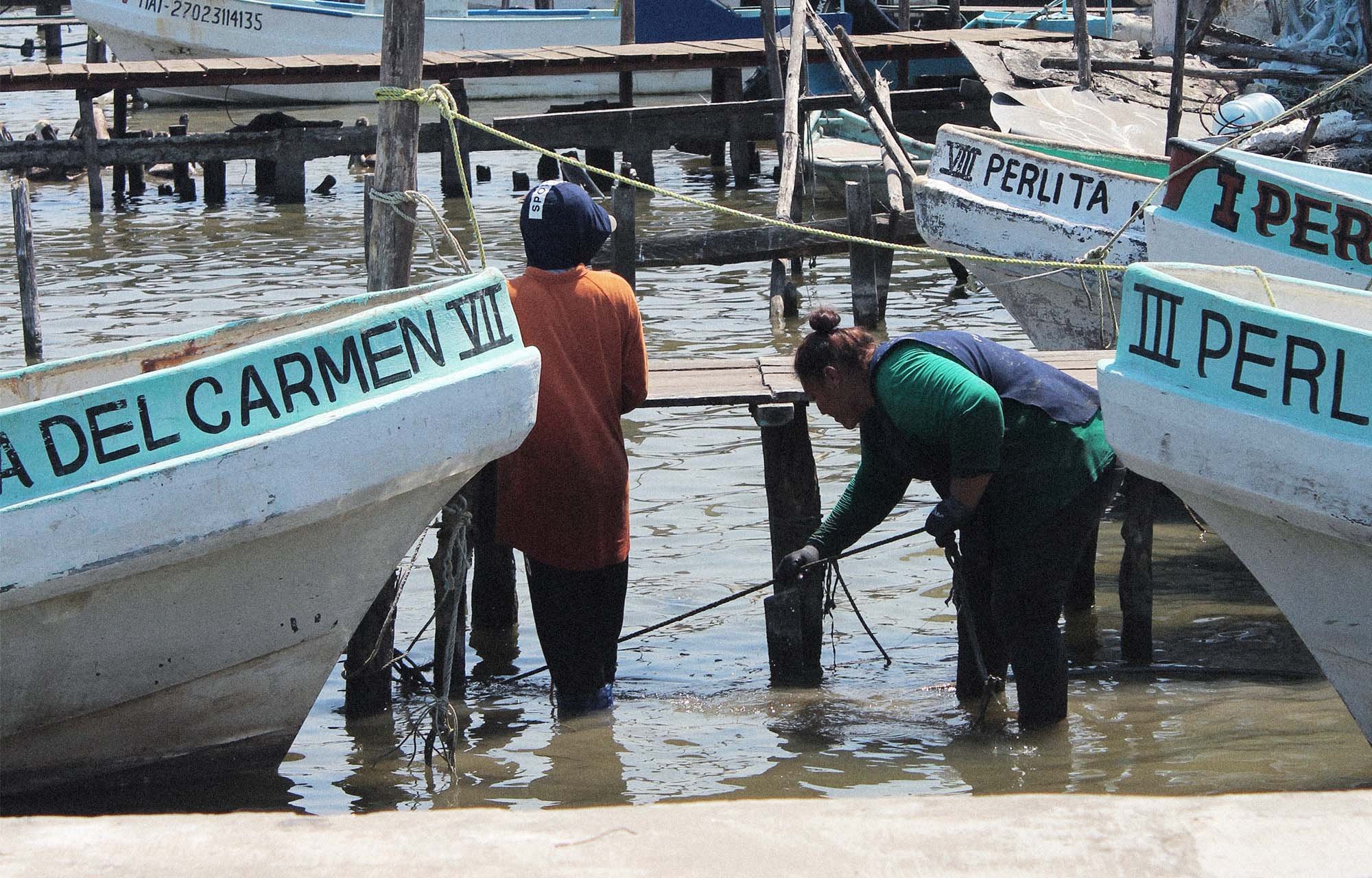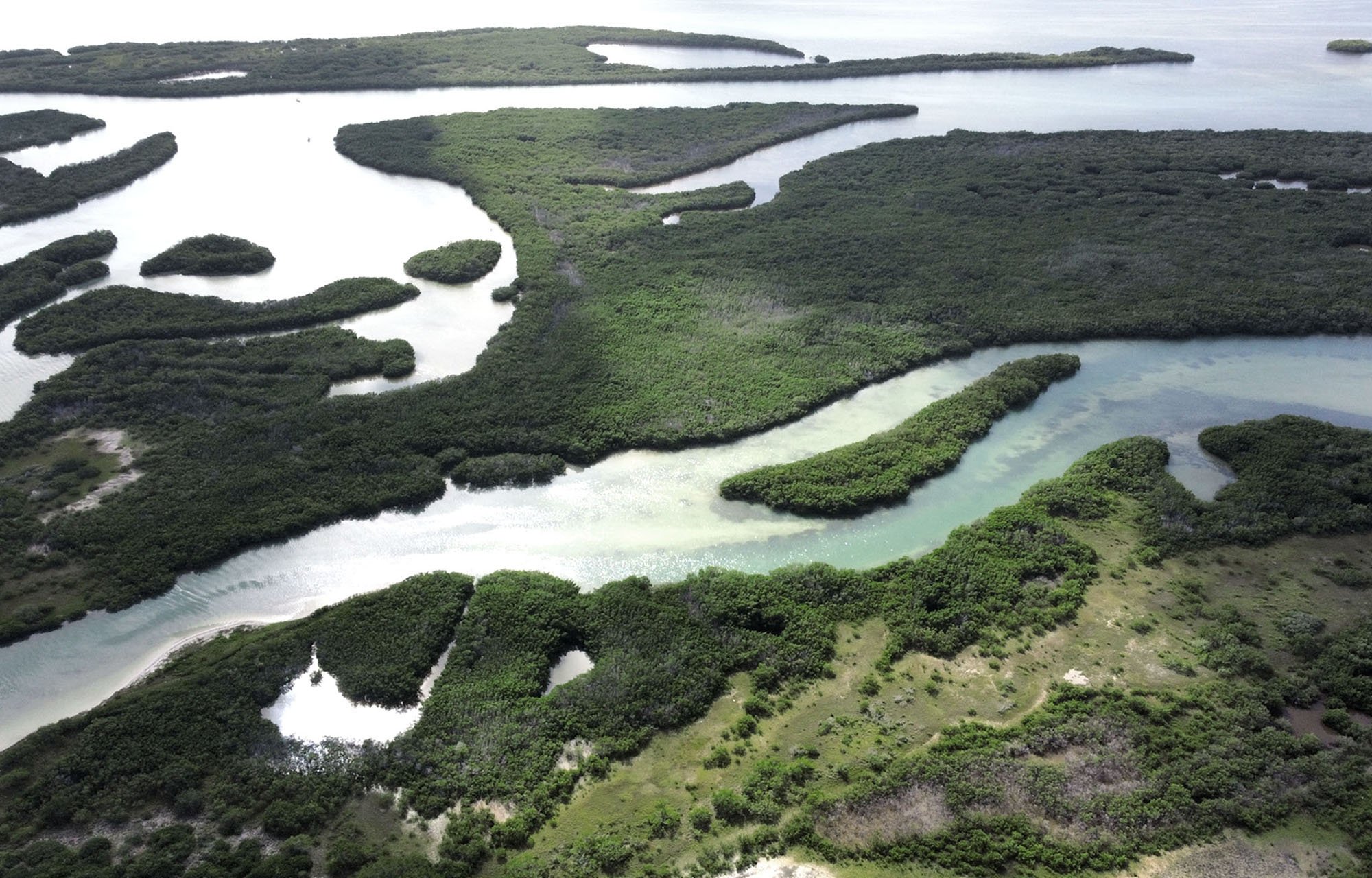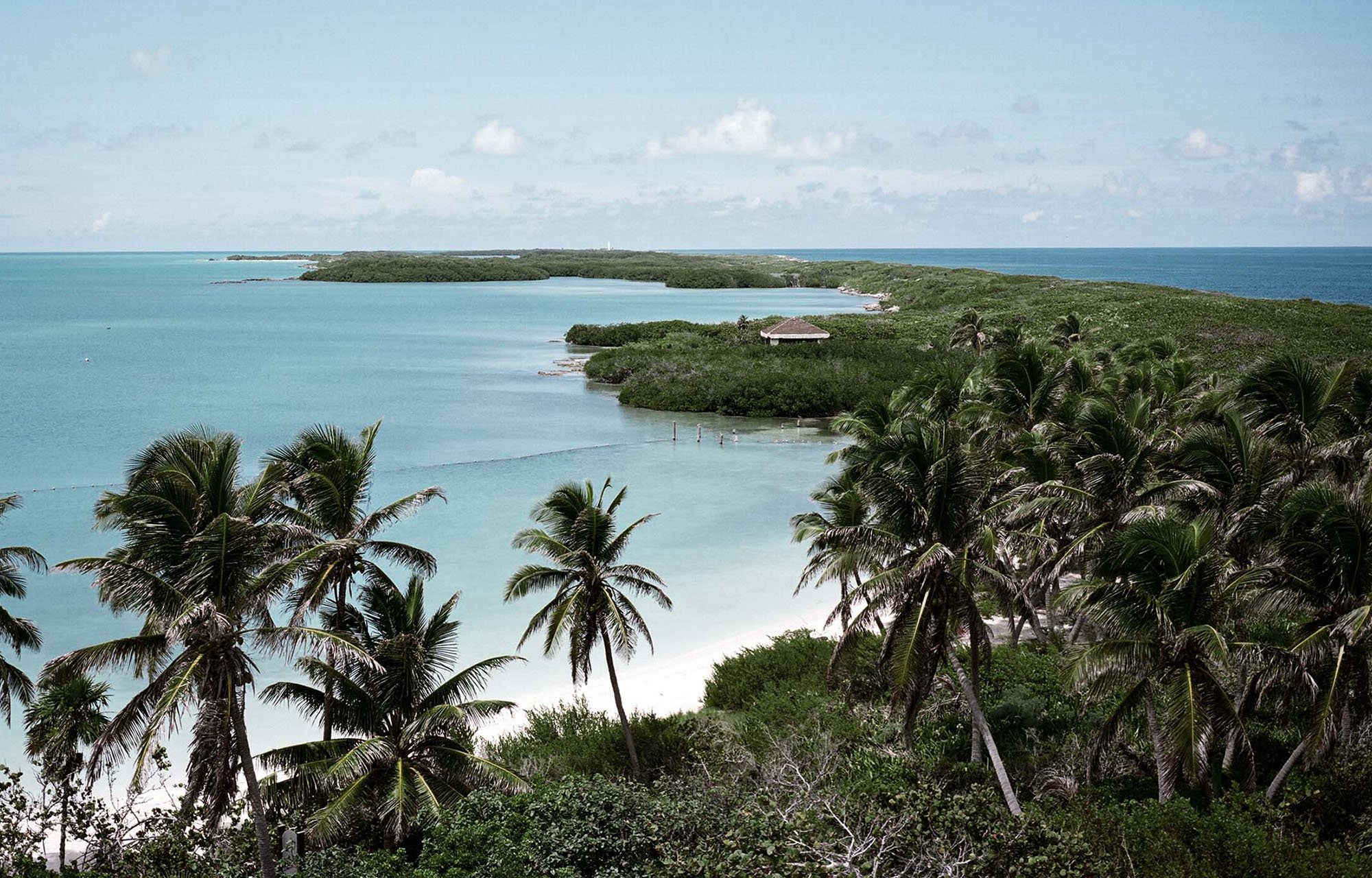THE MEXICAN WOMEN FIGHTING BACK AGAINST GHOST GEAR
Communities along the Caribbean coast and Gulf of Mexico ARE TACKLING GHOST GEAR AS PART OF A NEW PARLEY INITIATIVE – AND LOCAL WOMEN ARE LEADING THE WAY
As part of the NOAA-supported Parley AIR Mexico Marine Debris Mitigation Initiative project, our team in Mexico is currently collecting ghost gear – lost, unused and waste fishing nets – in seventeen Protected Areas along the Caribbean coast and Gulf of Mexico and recently hosted a Net Interception Tournament in the Pantanos de Centla wetlands. In this guest post, the team looks at how local fishers and families – mostly women – went above and beyond in their quest to intercept waste plastic.
Fishing equipment and nets that have been abandoned, lost or otherwise discarded are one of the deadliest forms of plastic debris for marine life – and also have the potential for the greatest negative economic impacts. Beyond trapping all kinds of marine creatures and birds, the plastic itself breaks down and is ingested by wildlife, often fatally. It can also become embedded in coral reefs, mangroves and other sensitive habitats, eventually breaking apart and entering the marine food chain years after being discarded.
Tourism and fishing communities suffer losses from the impacts of this marine debris. Although there is not a lot of data published with estimations of marine debris entering the Gulf of Mexico, a study of abandoned, lost or otherwise discarded fishing gear (ALDFG) from the Caribbean reported that the majority of it was underwater (60.1%) and is almost impossible to pinpoint, while the remainder was on shorelines (24.6%) or remained floating at sea (15.3%)*. Part of Parley Mexico’s goal in the Gulf of Mexico is to visit most of the Protected Areas and assess the magnitude of the problem.
* Matthews, 2012 – Gulf and Caribbean Fisheries Institute
In 2022, we undertook a quick field survey in search of the nets and other fishing gear that could potentially become ghost or ALDFG fishing gear and visited the entire east coast of Mexico and the Caribbean, all the way from Tamaulipas to Quintana Roo. We stopped in several fishing towns, held various workshops with the fishers, community members and government entities and conducted field prospections in search of such waste. As predicted, underwater materials are almost impossible to find, only some fishers have the knowledge of a few spots where these materials get stuck and might be possible to retrieve – although it is an expensive and arduous task to undertake.
We initially didn’t find much plastic floating at sea and found very little in the shorelines of the MPAs – soon learning that the nets are of great value for the fishers. They repair them as many times as possible and once the net is no longer viable for fishing; it is used as fences, palapas or even as decoration, andeven by neighboring towns miles away from the coast. Our key realization was that most of the unused fishing gear is stored by the fishers in their bodegas until they find another use for it and in very rare cases nets are discarded into the environment and burned or disposed of in the local landfill.
Nevertheless, despite the community’s care, many nets end up in the environment and oceans, so in February and March 2023, we undertook a campaign for Net Interception which covered four Protected Areas in three different states of SW Mexico: Ria Lagartos Biosphere Reserve and Celestún Biosphere Reserve in Yucatan, Pantanos de Centla in Tabasco and Laguna de Términos in Campeche and conducted five tournaments in different communities of these Protected Areas. Of all these efforts, one community stood out – a small fishing town named San Pedro in Tabasco within the Pantanos de Centla Biosphere Reserve.
The tournament there was a huge success. The community members were eager to participate, the competition was on and the good vibes and fun invaded the little town on the day of the tournament. Over 50 people were actively involved in the tournament, and the teams who participated were composed primarily of women. In fact, 90% of the participants were the amazing fisher women of San Pedro.
“The community is amazing, and the Protected Area is such a beautiful place – full of water and life.”
– Kim Ley-Cooper, Net Interception Coordinator for Parley Mexico
"In San Pedro, the fisher women are called Garruleras,” says Ximena Arvizu, Parley Mexico’s cleanup coordinator. “These amazing and strong women are in charge of cleaning the produce – mainly degutting and packing. However, some of these women also participate actively in the fishing chore and go out at sea sometimes a couple of days at a time; this is the case of Juana. Juana has so many stories, she's such an energetic and strong woman! Meeting these ladies has been such a pleasure and empowering experience, they are just an incredibly kind, driven and energetic bunch."
In this small community, some of the produce comes from the ocean while some comes from the rivers that pass through the protected area. San Pedro is a fishing community primarily, and even though most of the fishers keep the derelict nets in their bodegas, some nets unfortunately do end up in the river and the adjacent beach. In this tournament, participants brought all the waste/derelict fishing gear from their storage and they also spent about two weeks cleaning up the coast and recovering all the ghost gear from the beach and river. In all, the community managed to collect a massive 1872kg of derelict and ghost gear.
“During the tournament,” adds Ximena, “competition got so intense that a group of women ventured onto the neighboring community (Nuevo Campechito) to intercept some ghost gear that has been buried for years. Juana's group, "Las Arrieras" (the muleteers) dug up 159kg ghost nets with their bare hands!”
"Visiting Pantanos de Centla was such a fulfilling experience,” add Kim Ley-Cooper, Parley Mexico’s Net Interception Coordinator. “The community is amazing, and the Protected Area is such a beautiful place, full of water and life. We got to see crocodiles, several species of birds (hawks, kingfishers, ibis, herons), monkeys, and super healthy mangroves.”


















